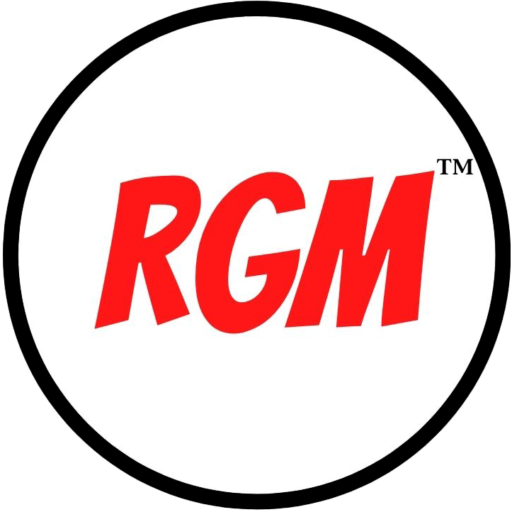
What does success do to you? How does an artist meaningfully create a body of work that allows for a genuine outlet in a palpable and dynamic way when the eyes of the world are upon them? In a unique and idiosyncratic fashion, the past three weeks at the movie theater have each given us a different answer to these questions with Todd Phillips’ Joker: Folie à Deux, Damien Leone’s Terrifier 3, and now Parker Finn’s Smile 2. Each of these films showcases a filmmaker, credited as both writer and director, attempting to follow up the most critically acclaimed and broadly successful work of their career. In all three cases, one can clearly see the impact that widespread acclaim has had on both the filmmakers and their films. Fascinatingly, Smile 2 might be the most direct example of this, as Parker Finn delivers a sequel to his breakout horror hit that is overtly obsessed with how internal horrors and anxieties manifest on a public stage.
To be frank, I didn’t particularly enjoy the first Smile. Based on Parker Finn’s earlier short film, Laura Hasn’t Slept, the original Smile felt like a solid short film concept that struggled to translate to a feature-length format. It had a strong hook but lacked depth. The marketing for Smile did an excellent job of selling the concept, but the film itself failed to build upon or explore it meaningfully. The story felt unmoored—not in a way that heightened the horror, but in a way that muddied it. To me, it seemed visually, sonically, and narratively derivative of superior films like David Robert Mitchell’s It Follows or Gore Verbinski’s The Ring.
However, I will concede that, despite some of Smile‘s weaker elements, Finn’s direction was promising enough to make me curious about his future work. In Smile 2, Finn truly steps up his game. It is a much more effective and affecting horror film, demonstrating Finn’s refinement as a director, with a stronger focus on character and thematic depth than in his previous effort.
Like the protagonist of this sequel, Skye Riley (played by Naomi Scott), Finn is clearly aware that more eyes are on him than ever, and he seems eager to show off his skills. The opening of Smile 2 is an extended, sustained take that plays out over several minutes, featuring complex in-camera effects, intricate staging and lighting, and a few well-placed edits. This prologue, while barely connecting to the first film’s narrative, serves primarily as a showcase of Finn’s newfound ambition and technical confidence. It’s a curtain-raiser, revealing the level of harmony and technical prowess that he and his team—cinematographer Charlie Sarroff, editor Elliot Greenberg, and composer Cristobal Tapia de Veer—have achieved.
Throughout the film, Finn and his team execute numerous similarly impressive long takes and carefully staged sequences. However, this overt sense of showmanship occasionally detracts from the film’s overall effectiveness. Some of these shots, including the prologue, feel less motivated by the story than by a desire to impress. They are cool, but to what end? The use of the long take as a tool to awe film enthusiasts has become overused, and it becomes even more noticeable when Finn forgoes these flashy techniques and delivers some of the best scares in the film through well-timed cuts.
Staging a truly great scare is an art, and I found the first Smile largely lacking in this regard. Smile 2, however, shows Finn significantly upping his game, delivering numerous scares that are both highly effective and memorable. A sequence involving a character watching a found-footage-style video on her phone plays brilliantly with suspense, voyeurism, and anticipation, culminating in a killer stinger. Another standout moment involves a dance troupe chasing Skye around her apartment, staged with impressive precision. My personal favorite is a simple but effective scare involving Skye seeing someone behind her in a mirror, paying homage to Duck Soup before taking a chilling turn with a single jump-cut. These moments go far beyond cheap jump scares, with Finn and his team clearly putting in the work to get the staging, timing, and nuances just right.
Perhaps the strongest element of the film is Naomi Scott’s performance as Skye Riley. It’s a demanding, emotionally charged role, and Scott rises to the challenge, delivering a performance that is both expansive and deeply personal. While the role features many of the big moments audiences love (screaming, emoting, etc.), reducing her work to just that would be a disservice. Scott brings a convincing portrayal of Skye’s anxiety and descent into madness, making it a standout performance that I hope earns her more recognition in the future.
That’s not to say Smile 2 is without flaws. Some issues from the first film persist, albeit in less severe forms. The main weakness is the storytelling and structure surrounding the central antagonist. Like its predecessor, Smile 2 gets bogged down in characters pedantically discussing the “rules” of how to combat the antagonist, yet the film never clearly explains how the Smile Entity actually operates.
What can or can’t the Smile Entity do? No idea. What is its goal or purpose? Who knows?
While I don’t need all of these questions answered for the film to work, if Smile 2 is going to base its entire finale on thwarting the Smile Entity with some convoluted strategy, the audience needs to understand the stakes and mechanics to feel any real tension. These shortcomings are further compounded by a few ill-advised plot twists that deflate the impact of the third act.
That said, Smile 2 certainly handles these elements better than the first film did. While Finn’s writing remains a weak point, the decision to focus more on Skye’s emotional arc and tie the antagonist’s torment to the film’s core themes helps mitigate these flaws.
RGM GRADE
(C+)
Not only did I find Smile 2 to be a much more interesting film on every level of execution than its predecessor, but I also found it infinitely more compelling, engrossing, and impactful. By building this film from the ground up, rather than attempting to stretch a short film’s worth of story into a feature-length runtime, Parker Finn has delivered a far superior sequel that stands firmly on its own. It’s a horror-fueled meditation on how one’s authorial intent can slip away when creating on such a large scale, yet Finn deftly navigates these potential pitfalls. Rather than suffering from a sophomore slump, Smile 2 showcases immense promise and growth for the young filmmaker, with better scares, a more affecting story, and a standout lead performance from Naomi Scott.
Discover more from RGM
Subscribe to get the latest posts sent to your email.










